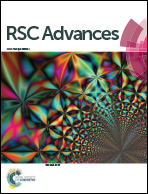Ultra high performance N-doped carbon catalysts for the ORR derived from the reaction between organic-nitrate anions inside a layered nanoreactor
Abstract
The extensive research on the synthesis of nitrogen-doped carbon materials (NCMs) as non-precious metal catalysts (NPMCs) has shown a promising future for applying the NPMCs to catalyze the slow oxygen reduction reaction (ORR) in polymer electrolyte fuel cells (PEFCs) and, therefore, the widespread use of devices based on PEFCs. However, the main reasons for the delay in starting the practical use of NCMs in PEFCs are the use of very specific organic chemicals as well as multiple stages of the catalyst synthesis, lack of stability, activity and/or selectivity limitations. Here we show that the NCMs can be produced by a simple route on a very large scale using any organic anions for the first time. The synthesized carbon catalysts showed highly porous structures, tunable nitrogen content and high electrochemical performance. As the best performing catalyst it had an open circuit potential (OCP) of as high as 1.04 V, and a Tafel slope of as low as 38.0 mV per decade with an exchange current density of as high as 1.34 × 10−4 A cm−2, which is a much higher performance compared to other NPMCs.


 Please wait while we load your content...
Please wait while we load your content...